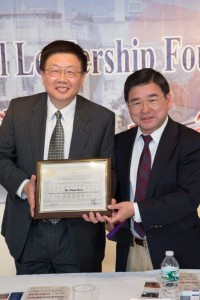By Paul Hsu – Originally published on Entrepreneur.com

Image credit: Paul Hocksenar via Flickr
Poor Lou Gerstner.
A widely respected executive credited with leading RJR Nabisco and American Express to corporate glory, the 51-year-old had just accepted the job nobody wanted.
For nearly a century, IBM had risen practically unfettered from bland holding company to industrial-strength powerhouse. A premier technology provider globally, IBM was credited most recently with ushering in the personal computer revolution.
But that was then. By 1993, as Gerstner took over as CEO, “Big Blue” was in free fall.
Bloated and teetering on bankruptcy, the company posted an eye-popping $8.1 billion loss the year before. IBM under Gerstner quickly returned to profitability. But stopping the bleeding was one thing, restoring relevance was another.
To do that, Gerstner knew, IBM would need to transform from balkanized conglomerate to a breeding ground for business invention. In seizing the nascent internet phenomenon and nixing clunky technology, IBM would go on to recreate itself.
For Gerstner, a notoriously buttoned-down businessman unimpressed with “The Next Big Thing,” it marked a radical departure. In thinking “outside the box,” Gerstner had adopted the “Innovation Mindset.”
America is itself a great example of the Innovation Mindset. Its form of government, and even its very founding, incorporated the Innovation Mindset.
Today, innovation is most commonly associated with Silicon Valley. Little wonder: Apple, founded by iconic entrepreneur Steve Jobs, evolved from a simple computer-maker to changing the way people communicate.
As the term Innovation Mindset would suggest, innovation is a state of mind, more than intrinsic talent. To enter the “Innovation Mindset,” consider the following:
1. Never say “no” before “maybe.” The word “no” is like closing a door to opportunity. A business proposal, offer to partner or idea might seem unworkable, but pause and agree to listen. “Let me think about it,” is always the best answer. Mull it over. Never be dismissive.
2. Stay curious. Albert Einstein talked about a “holy curiosity.” Learning is a lifetime process, as well as a trial-and-error process. Take time to tinker. Tinkering is the precursor to problem solving.
3. Be bold. Believe it or not, there is nothing to lose by taking a chance to let people know about you and who you are. Introduce yourself and ask for a meeting or quick conversation. Remember: The people you are asking have nothing to lose by listening either.
4. Strive to understand what makes people tick. Business is really about people and what they want and need. Instead of relying on market research, rely on direct observation.
5. Build relationships. Building a relationship is more important than creating a product. That might sound strange, but never forget it.
6. Build wisely. Innovation is a process, not a destination. Build slowly and never rush to “get big,” or worse, become an “overnight millionaire.” Innovation is a marathon, not a 40-year dash.
7. Welcome new ideas, even from unlikely sources. Similar to never saying “no,” remember that a great idea can come from anywhere, and at any time. Always leave room for outside input.
8. Adhere to strong values. “Company culture” is a byword for the values of a company. Being value driven is not doing shoddy work and being trustworthy. People, not money, are the beneficiary of innovation.


